1. A flag flown upside‑down to protest government decisions
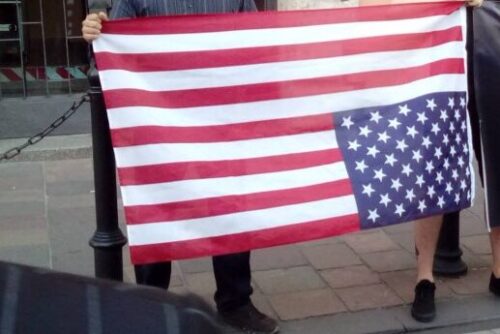
In one case, Americans displayed the U.S. flag upside‑down—intending it as a distress signal over Roe v. Wade rulings. But the backlash came because legally, flying the flag inverted is reserved for dire distress only—not protest. The attempt to be patriotic and signal concern ironically just looked like ignorance of the Flag Code. So instead of drawing attention to policy, people mostly mocked the misuse of the symbol.
The result was unintended comedy: what was meant as a bold, patriotic statement ended up looking like someone didn’t know how a flag is supposed to be displayed. People ridiculed the act online, with commentators calling it performative optics. The protest lost its issue in the shuffle of jokes. It’s a classic example of irony: the symbolism backfired.
2. Student banned from flying the flag on his pickup
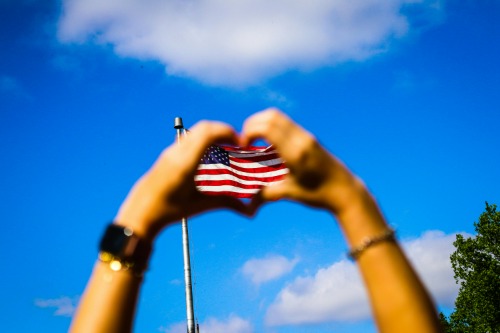
An Oklahoma high school banned a student from flying an American flag on his truck in the school parking lot. The school said it was simply a general no‑flag policy, but the public read it as anti‑patriotic. Angry classmates and parents held a massive Pledge of Allegiance rally, turning enforcement into a community spectacle. The protest ended up looking far more patriotic than a simple flag display ever would have.
In trying to avoid disruption, the administrators sparked one. Dozens of other vehicles displayed flags in solidarity, and local officials even intervened. Ironically, the school’s neutral stance ended up elevating the flag display far beyond its original effect. Instead of quiet compliance, it became a loud affirmation of patriotism.
3. TV anchor dons flag pin then regrets it
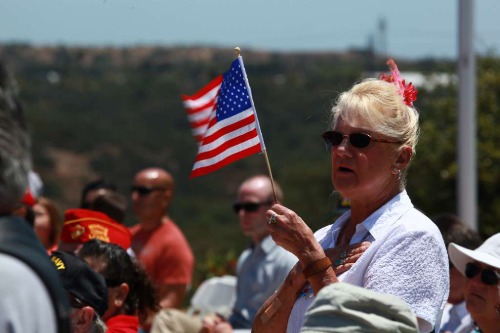
After 9/11, a leading CBS anchor wore a massive stars‑and‑stripes pin nightly, projecting unwavering patriotism on live TV. Later, he admitted publicly that he’d done so more from pressure than personal conviction. The pin became a symbol of conforming to the patriotic fervor he found stifling. It’s ironic that a gesture meant to affirm loyalty led him to retreat from critical journalism, raising questions about authenticity.
When he spoke later about “patriotism run amok,” viewers realized the symbol had defined him more than the journalism did. Public reception shifted: the pin didn’t look like conviction—it looked like a costume. The display meant to unify actually exposed tension. It showed how patriotic theatrics can undermine credibility.
4. Massive military parade overshadowed by anti‑parade protests

During a 250th‑anniversary army parade in D.C., the administration rolled out an elaborate military show to celebrate patriotism. At the same time, thousands of protesters rallied under the slogan “No Kings,” denouncing perceived authoritarian overreach. Instead of a moment of national unity, the event showcased sharp division. The patriotic spectacle turned into a backdrop for dissent—an ironic twist on symbolism meant to unify.
The irony is thick: the parade intended as a patriotic display became a stage for political protest. Supporters hailed it as celebration; critics saw authoritarian posturing. The moment meant to reassure became polarizing spectacle. It highlighted how a patriotic show can be undercut by the very freedom it celebrates.
5. Peace activist labeled un‑American during flag‑wavy fervor
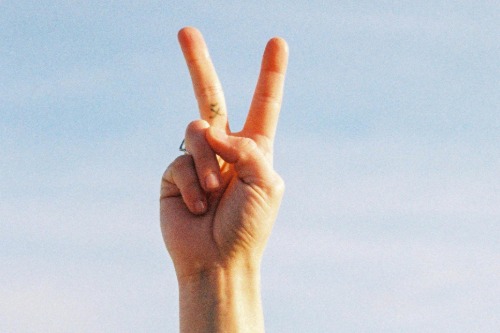
In the aftermath of 9/11, peace activists who questioned U.S. actions faced fierce backlash. One Buffalo group waved alternate flags and voiced dissent, only to be branded “un‑American.” Their patriotism—founded on a deep concern for justice—was twisted into disloyalty in public perception. The irony: they invoked American ideals to critique the country and were punished for it.
The activists were using patriotism as a lens for reform, but the crowd saw only dissent. Their intention was to provoke reflection, not division. Yet they were demonized. It underscores how patriotic intent can be misconstrued when wrapped in protest.
6. University professor criticized flag‑waving after 9/11
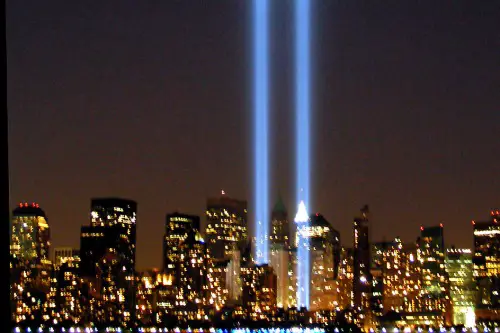
A professor wrote a controversial editorial comparing U.S. terrorism with its own foreign actions, prompting angry reaction. His attempt at balanced critique during a time of national solidarity was interpreted as unpatriotic. The fervent flag‑waving climate meant there was no room for nuance. His message backfired: he became a symbol of disloyalty instead of thoughtful dissent.
This intended to be a sober moral discussion, but was instead met with outrage. His university stood by free speech, yet public pressure mounted. The irony: raising critical questions was cast as betrayal. The attempt to live patriotic speech ended up fueling division.
7. Reform movement rooted in patriotic rhetoric

Progressive activists often invoked patriotic themes to demand change, citing Founding principles and national ideals. And yet conservatives accused them of being anti‑America for challenging the status quo. The irony is that their patriotism emerged from love of country—and was rejected as un‑patriotic by many. The rhetoric to redeem the nation backfired into polarizing accusations.
They aimed to restore America to its ideals, not tear it down. But their use of patriotic language became fodder for conflict. Instead of rallying consensus, they fueled division. Constructive patriotism was misread as betrayal.
8. War bonds propaganda becomes jingoistic spectacle

Following Pearl Harbor, posters urged Americans to “Avenge Pearl Harbor” by buying war bonds or joining the military. The propagandistic fervor turned mourning into commercial spectacle, with ads selling gum, cigarettes, fashions wrapped in flag imagery. What was intended as unity to support the war effort devolved into jingoistic consumerism. The patriotic display ironically encouraged blind consumption rather than reflection.
Instead of solemn national resolve, people got cartoonish posters and catchy tunes. The symbols of grief became marketing tools. Patriotism morphed into mass spectacle overnight. The message for sacrifice got lost in consumer frenzy.
9. Patriotic art show co‑opted political messaging
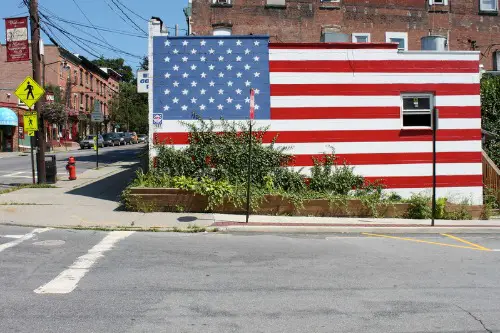
At political conventions, flag imagery was used heavily to signal patriotism and unity. But critics noted that such aesthetics often overshadowed policy messages or marginalized dissent. The attempt to reclaim the flag ironically erased complexity. The display backfired by minimizing real issues in favor of symbolic optics.
Using patriotic symbols to attract centrist voters made the message feel superficial. It invited criticism that it was more branding than substance. Instead of inclusivity, it felt performative. Symbolic patriotism drowned out authentic discourse.
10. Patriotism accused of hypocrisy over internment era
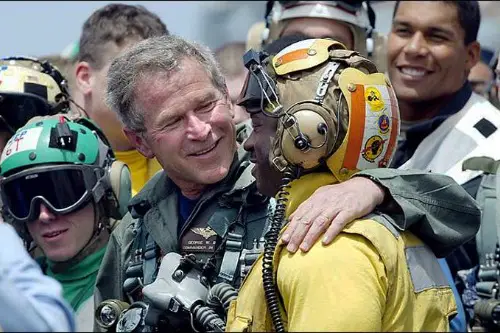
Some conservatives accused critics of U.S. policies of being un‑American, while overlooking historic injustices like Japanese internment or Jim Crow slavery enacted under flag‑waving leadership. The irony: blind patriotism to power was defended using that same flag. The patriotic posture that labels dissenters as traitors often ignores historical abuses committed in the nation’s name. Thus the display of loyalty becomes an irony-ridden gloss over past wrongs.
This angered those pointing to history of intolerance. Patriotic symbols were wielded to suppress acknowledgment of mistakes. The flag was invoked to shield the past. Ironically, true patriotism would demand remembrance, not erasure.
11. Early broadcasters shrank from tough questions post‑9/11

Media figures donned flag pins and uncritically echoed official rhetoric, but later reflected that it impeded their ability to ask tough questions. The display of unwavering patriotism ironically eroded journalistic independence. Symbolic conformity made honest reporting become suspect or silenced. The patriotic pageantry, in the end, undercut the very scrutiny democratic citizens expect.
Years later, anchors admitted the pressure shaped coverage more than editorial judgment. They traded critique for comfort. That flag lapel became a symbol of self-censorship. Patriotic trappings ironically became chains.
12. Cartoon satire highlights misguided jingoism
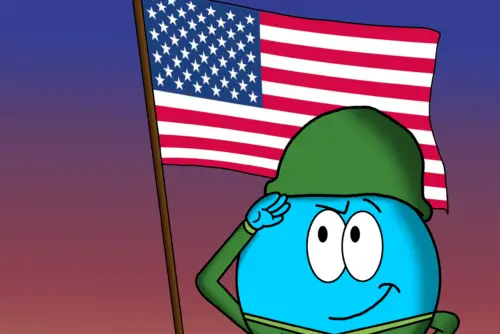
Political cartoons titled “Patriotism Gone Wrong” lampoon over-the-top displays—from cheesy flag captions to distorted values. They literally illustrate how excessive or superficial patriotism can twist into farce. What began as comedic commentary shows how symbolic overload undermines real meaning. Patriotism twisted into caricature becomes itself the joke.
These images exaggerate misplaced sentiment to the point of absurdity. They prove that patriotic symbols, when misused, can turn into satire. The irony is inherent: the more you try to perform patriotism, the more you risk ridicule. Art reflects reality back at us in hilarious and cautionary ways.
This post 12 Times Patriotic Displays Backfired in Hilariously Ironic Ways was first published on American Charm.


